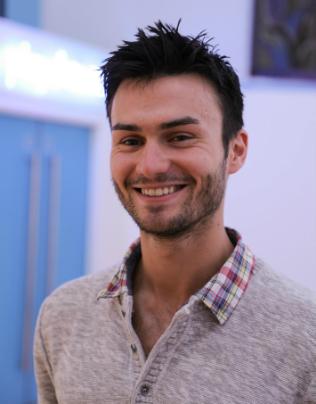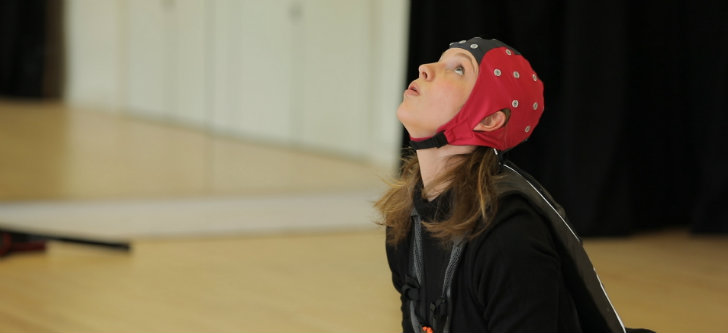Looking at dancers' brain activity as they perform is at the centre of a new body of science and arts activity between the University of Stirling and Macrobert Arts Centre.
Stirling PhD researcher Simon Ladouce records the electrical brain activity of dancers as they perform a choreographed routine. The project is the first time the researchers have recorded electrophysiological brain signals in someone who is dancing – bringing art and science together in a novel way.
Real-life environment
Simon Ladouce, from the University’s Centre for Mobile Cognition, said: “This unique link-up with Macrobert represents a great opportunity to put our methods developed here at Stirling to the challenge, capturing brain activity during highly dynamic behaviours in a real-life environment.”

Simon Ladouce is leading the research.
In the research test, the dancers wear caps, filled with electrodes, on their heads. This tells the experts when and where electrical activity is changing on the surface of the brain.
Simon added: “We want find out more about the brain’s dynamics when dancing. Although some dancers make it seem effortless, dancing actually requires the brain to plan a series of complex actions and quickly adapt these based on what their partner, or the tempo of the music, is doing.
“We are particularly interested in the difference between dancing alone and with a partner: how do brain processes differ when dancing in synchrony with someone else? By recording brainwaves in the social setting of dance, we can gain a better understanding about how we perceive, think and act in everyday life situations.”
Inspiring practice
Julie Ellen, Artistic Director at Macrobert Arts Centre, said: “It is a pleasure to see performers and researchers inspiring and informing each other’s practise in ways that develop what they do. The growth in understanding that is then shared goes toward increasing public knowledge. Working in this way really adds to the value of Macrobert Arts Centre and the University of Stirling as cultural assets for the communities we serve.”
Direct research into mobile cognition began at Stirling three years ago and the field is still in its infancy. Simon’s work will be displayed on opening night, alongside other cutting-edge neuroscience research which has informed the show’s production.
Fellow PhD researcher Thomas Di Virgilio will demonstrate how scientists see the brain communicating with muscle elsewhere in the body, showing part of the science behind the traumatic brain damage suffered by the show’s central character.
Masters student Derval McCormack will also illustrate the show’s emotional narrative by demonstrating a brain stimulation technique which moderates the brain’s ability to detect positive or negative emotions.
Background information
Media enquiries to Corrie Campbell, Communications Officer on 01786 466 169 or c.r.campbell@stir.ac.uk

